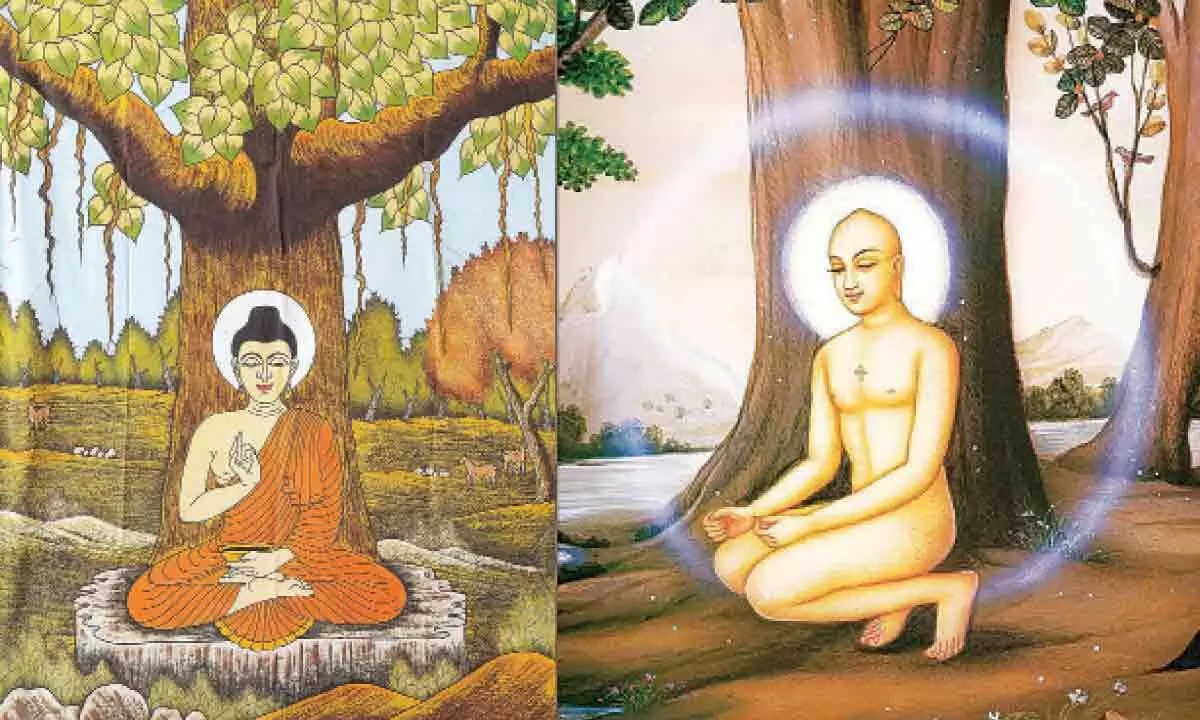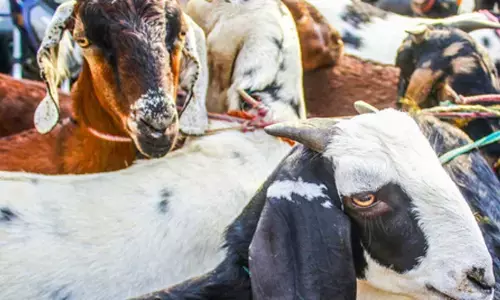The Forbidden Fruit

At the beginning of every new year, we reiterate our old resolutions. As seekers we too can contemplate some of the old ideas discussed in these columns from a new perspective.
At the beginning of every new year, we reiterate our old resolutions. As seekers we too can contemplate some of the old ideas discussed in these columns from a new perspective.
All Indian religions hold that all beings, from the tiniest to the mightiest, die and are reborn. Human life is the stage in which a jiva, being, performs good or bad actions. It is the plane of action, karma-bhumi. Reaping the fruit of our action is inescapable. It can happen in another human life or in a higher life (in the divine plane) or a lower life (in the animal plane). Life after life, man continuously does good or bad actions and for reaping the fruit of the baggage of karma, the subtle body is said to shuttle between different planes, in different times, interminably. This chain of birth and death can be broken only when a person gets enlightened by realizing his own divine nature and lives so.
Rig Veda, the oldest book of mankind, illustrates this through the metaphor of a tree. This is repeated in the Upanishads later. Strangely, the tree is described as eternal and ephemeral. It is an oxymoron to be understood in the light of Vedantic thought. The tree is eternal so long as a person does not realize his divine nature, but it becomes ephemeral the moment he/she realizes the self. It is an upside-down tree with roots above and unseen, and all other parts are seen. The word ‘roots’ refers to the cause of creation, God, as we call it. Hence, the roots are unseen. There exist several branches, with a variety of nests high and low, which represent the happy or unhappy abodes for the jiva. These are what we call the heavenly or hellish regions. There are alluring promises of heavenly worlds, etc., which bind a person to them and make him forget his quest for truth. There are other pleasures such as music, dance, or misery, sorrows or violence. There are shouts of joy and cries of pain in different nests of the tree. The human being shuttles from nest to nest in each birth.
Do not eat the fruit of the tree, is the message. The Gita talked about it as karma yoga. Krishna called it ‘an intelligent way of doing karma’. One must perform one’s duty in society, undertake various actions, but should not seek punyam, the spiritual merit, as it is called. If he seeks the fruit, it binds him by giving him another life. Mere abstinence from eating the fruit is not enough, a person must contemplate and realize his nature. All Indian schools dictate that man should not seek the fruit of karma.
The metaphor further talks of every being as a combination of two aspects – jiva and the Iswara, the atma, enlivening the jiva. The jiva eats the fruit whereas the Iswara aspect does not eat the fruit. By some grace of God when the jiva gets enlightened, he realizes that he is indeed not different from Iswara, the divine.
While the metaphor in the Upanishad is mostly unknown, the Biblical metaphor is well known. The fruit of the tree of knowledge is forbidden by God, as we know it. The moment Adam (corresponding to atma) and Eve (corresponding to jiva) eat the fruit, they lose their innocence and the bliss of being with God. Death haunts them. In the Indian tradition, the fruit is the fruit of one’s karma, which binds him to the cycle of birth and death.
The way to break away from the cycle of birth and death is to follow God’s will, the cosmic scheme. Karma yoga is the first step, followed by practices of self-restraint and study of scriptures. The tree can be cut only by the axe of knowledge.
Buddhism and Jainism too have the metaphor of the tree. Buddhism calls it the tree of awakening, the bodhi tree, and so do many other cultures. Judaism has the symbol of tree, and the idea is close to that in Vedanta. The tree is the symbol of consciousness manifesting as the universe. It is an interesting voyage across cultures.
(The writer is a former DGP, Andhra Pradesh)
















